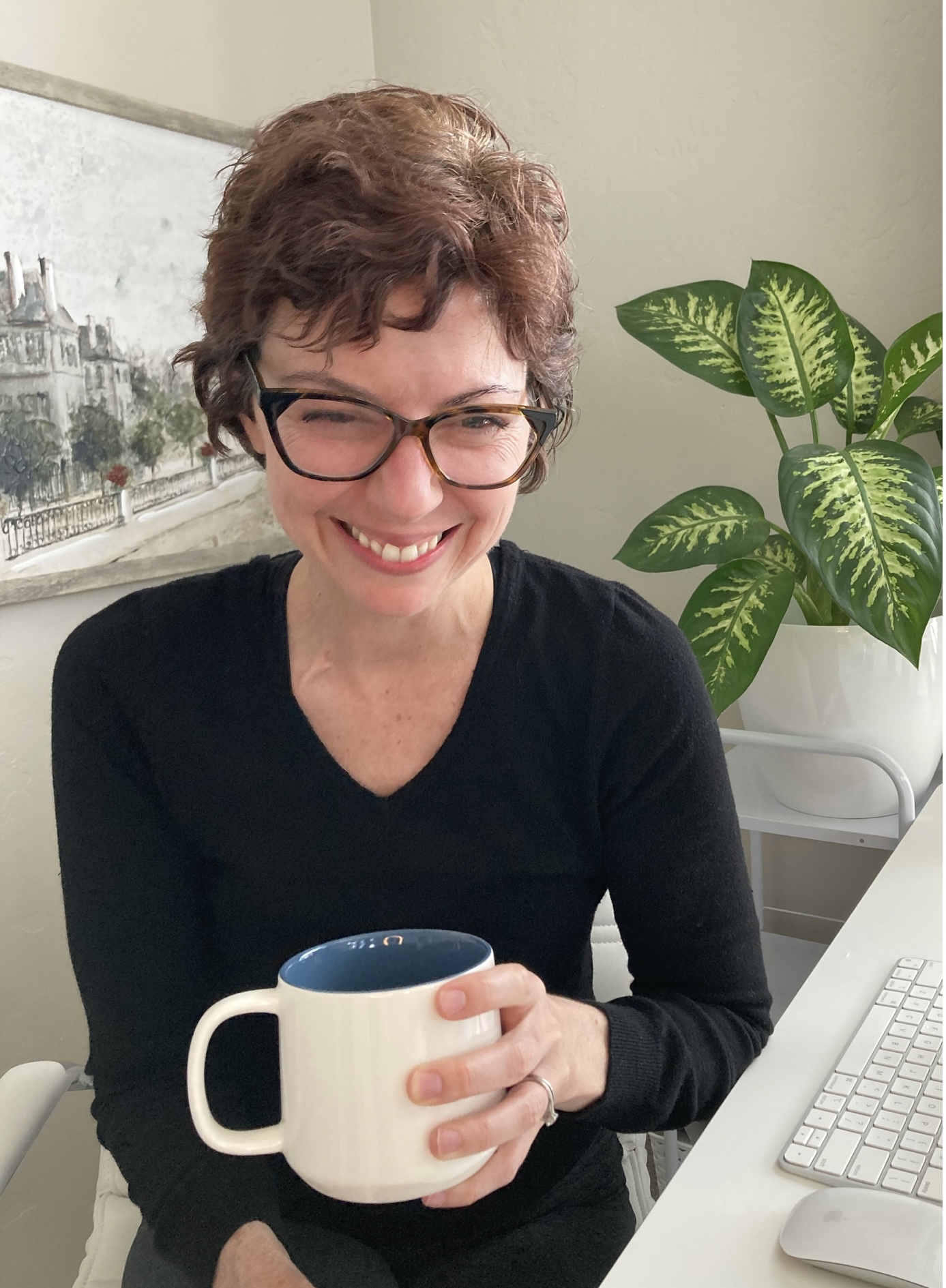I grew up on the doorstep of Hollywood and Orange County, the beauty capitals of the world. When out-of-state friends visited, they were stunned by the “beauties per capita” of my neighborhood. I’m not sure if it was this saturation of perfectly curated faces and bodies, or a hardwired desire within me, but as a teenager I prayed, “God, please make me beautiful. Please. And if you do, I’ll use my beauty to glorify you.”
I laugh now at my young, self-serving prayer, but even to this day—on the cusp of 47 years old—I long to be beautiful. However, as the forties have proven, aging isn’t a kind process, and wrinkles don’t turn heads. Nor does a terminal cancer diagnosis filled with harsh treatments. My once firm-and-glowing skin has been replaced by the relentless effects of gravity, accelerated by years of chemotherapy.
~ ~ ~
At 30 years old, my (not yet sagging) jowls almost dropped when one of my work colleagues, also 30, outlined her lifelong Botox plan to me. Botox was still the new kid on the block, unvetted, eyed with suspicion. I looked at my friend’s face—still glowing with youth—and grieved that she was so fearful of aging.
Little did I know that within ten years, Botox—and fillers and peels and the knife—would become as common and accessible as a gym membership, and women in their twenties would begin their muscle-paralyzing, face-altering regime in a race against time. I would watch countless actresses freeze their faces into expressionless but photo-perfect stills. I would also watch older Christian women suddenly look ten years younger, with plump cheeks and taut mouths. And I would look into the mirror myself and wonder, What if I could get rid of these sagging jowls and deepening lines? And what happens if I choose not to do anything and end up looking twenty years older than my peers?
~ ~ ~
Before my first cancer diagnosis at age 41, I was often told how young I looked for my age. I think subconsciously it made me feel special, perhaps even a bit superior, to look younger than some of my peers. But a five-year journey through cancer has changed all that: I’ve lost my head full of hair—twice—along with my eyebrows and eyelashes, healthy skin, and bright eyes. There have been weeks at a time when I’ve looked like an 80-year-old man. These losses have touched the very core of my identity as a woman, revealing just how deep my desire for youthful beauty truly is. I’ve alternately grieved and feared, felt shame and sometimes even despaired over my reflection in the mirror.
But my grieving has prompted me to pray a big prayer:
God, give me a beauty that doesn’t make sense to this world—a beauty that shines and even grows through all of this, and that ultimately points to you. When people see me, let them think, She’s not beautiful by cultural standards, but she has a compelling beauty—and I want to know where it comes from.
Even as I’ve mourned the loss of my youthful features and the way chemo has hyper-aged my face, I’ve marveled to watch God answer my prayer in spades. He’s slowly been freeing me from my self-obsession, working miracles in my heart and forging a new confidence in me that literally shows on my face. He’s tenderly held my face in his hands and said,
Those who look to Me are radiant with joy; their faces will never be ashamed. (Psalm 34:5)
~ ~ ~
As I look to God, my face becomes more radiant and unashamed, and this results in a beauty that doesn’t begin and end with me. My face was created, with all its intricate muscles and movements, to be a powerhouse of joy, empathy, understanding, and love. In his book, Transforming Fellowship, Chris Coursey writes,
In the Bible, to have God’s face is to have life, joy and blessing while the absence of God’s face is equated with death, abandonment and rejection. It is no accident that the face is where joy starts and stops . . . With forty-three muscles, the face is an ideal platform to convey our love and express our delight toward one another” (p.52).
Each of our facial muscles were designed by God for a purpose, and when they are working together for that purpose, true indestructible beauty results. It’s a beauty that is relational and others-centered. It’s a beauty that doesn’t walk into a room worrying, “What do they think about how I look?” but rather, “How can I connect with and care for them?”
Botox and fillers and peels and the like are not inherently moral issues (I’m not writing this article to convince you never to use them). But for me, they present three intrinsic problems: by altering my face to perpetually erase signs of my true age, I’m communicating—
1. “I’m not grateful for every year I’ve been given here. I’d like to pretend I’ve only lived 30 years instead of 47.” (In light of a terminal diagnosis, this feels almost tragic.)
2. “I’m willing to prioritize feeling better about myself at the expense of caring for the people around me.”
3. “This life, this moment, is what matters most.”
With my remaining days here, I want to wield the power of my face for the good of others. I want to use every muscle and wrinkle and line to express compassion to a hurting friend, joy at seeing another human, even hilarity over the comedic aspects of life! I want my husband and son to see my love for them all over my face, to see how happy I am to be with them.
Can you imagine if we women leaned into this kind of loving beauty? What if we refused to live under the crushingly high standards society has set for us—superficial-beauty standards that require us to alter the very function of our faces to feel good about ourselves—and instead celebrated aged beauty, wrinkled joy, and faces that use all 43 muscles to love others? What if we chose to wade through the awkwardness and grief of aging in order to reflect Jesus to a world that desperately needs him?
~ ~ ~
In The Great Divorce, C.S. Lewis imagines a man who gets to visit both heaven and hell before he dies. While in heaven, the man sees a radiant woman and is transfixed by “the unbearable beauty of her face.” He learns that this woman was not famous or important when she lived on earth—she simply loved people out of the overflow of her life in Christ, and it resulted in a breathtaking eternal beauty. A teacher explains to the man the impact of the woman’s life and the reason for her beauty:
‘It is like when you throw a stone into a pool, and the concentric waves spread out further and further. Who knows where it will end? Redeemed humanity is still young, it has hardly come to its full strength. But already there is joy enough in the little finger of a saint such as yonder lady to waken all the dead things of the universe into life.’ (p.120)
We’re on the cusp of eternity—and with it, eternal beauty that will require us to have resurrected bodies to bear its magnitude. It’s a beauty that was bought by the blood of Jesus, a beauty that can never be spoiled. It’s the fulfilled beauty of Ezekiel 16 and Song of Songs 4:
You are absolutely beautiful, my darling; there is no imperfection in you. (Song of Songs 4:7)
Your fame spread among the nations because of your beauty, for it was perfect through my splendor, which I had bestowed on you. This is the declaration of the Lord God. (Ezekiel 16:14)
These momentary wrinkles and lines remind us that this life is vanishing like a mist (James 4:14), but infinite beauty face-to-face with Jesus is almost here.
For more encouragement from Scripture, see Psalm 27:4; Proverbs 15:13; Ezekiel 16:6-14; 1 Peter 1:21-25; Isaiah 60:15; 1 Peter 4:7-8;

